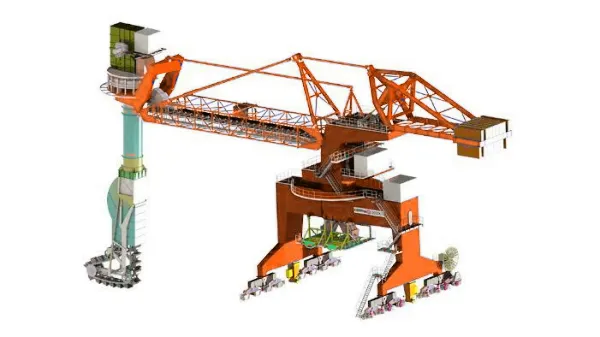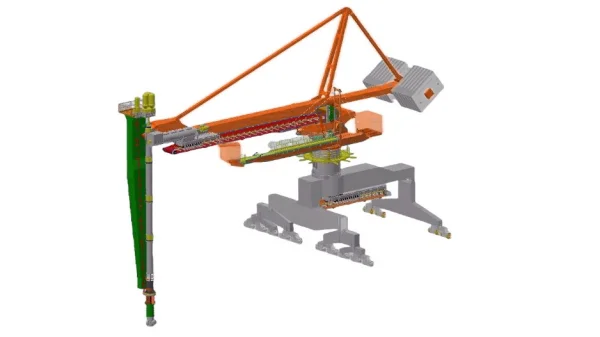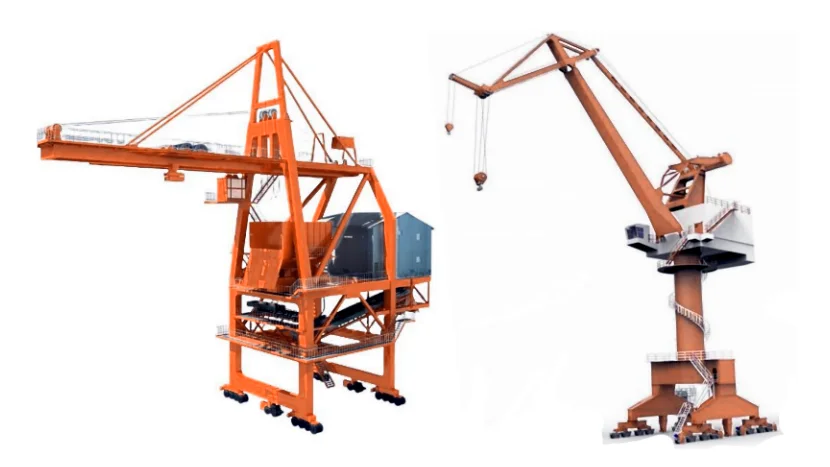Just let we know what you want, and we will get in touch with you as soon as possible!
Mobile Bulk Material Handling Experts
Mechanical Ship Unloader For Bulk Material Unloading
A mechanical ship unloader is a specialized piece of equipment used in ports to unload bulk materials, such as coal, grain, cement, or quicklime, from the holds of bulk carrier ships. Unlike manual or less automated methods, mechanical unloaders use powered mechanisms (e.g., screws, buckets, or grabs) to extract and transfer materials to shore-based systems like conveyors, hoppers, or storage facilities. They are designed for efficiency, high throughput, and often incorporate features to minimize dust, material degradation, and environmental impact. In the context of your previous queries about coal unloading with mobile hoppers, stackers, and screw unloaders, mechanical ship unloaders are highly relevant for handling bulk materials like coal, potentially with closed-hatch compatibility for dust control (as noted for quicklime).
Below, I'll define the key characteristics, types, and features of mechanical ship unloaders, with a focus on their application to coal unloading and integration with systems like mobile hoppers.
Types of Mechanical Ship Unloaders
Mechanical ship unloaders vary in design based on the material, ship size, and port requirements. The main types include:

Grab Type Ship Unloader
Grab Bucket Unloaders
A crane-based system with a grab bucket (clamshell or multi-jaw) that scoops material from the hold and deposits it into a hopper or conveyor.
- Throughput: 500–3,000 tons/hour (t/h), depending on bucket size (e.g., 10–50 m³).
- Closed-Hatch Compatibility: Limited, as they typically require open hatches; sealed chutes can minimize dust.
Features
- High flexibility: Can access multiple holds without moving the ship.
- Dust control: Enclosed grabs or dust suppression systems (e.g., water mist).
- Suitable for coal, grain, or aggregates.

Chain Bucket Ship Unloader
Continuous Bucket Unloaders
Uses a continuous chain or belt of buckets to scoop material from the hold and elevate it to a conveyor system.
- Throughput: 1,000–5,000 t/h, ideal for high-volume cargoes.
- Closed-Hatch Compatibility: Can use sealed inlets for dust control, though open hatches are standard.
Features
- Continuous operation for fast unloading (e.g., Capesize ships, 180,000 DWT).
- Enclosed systems reduce dust emissions.
- Often rail-mounted or gantry-based for large ports.

Screw Ship Unloader
Screw Ship Unloaders
Employs a rotating screw (auger) to extract material from holds and transfer it to conveyors or hoppers (as discussed in your previous query).
- Throughput: 300–2,000 t/h, suited for medium volumes.
- Closed-Hatch Compatibility: Excellent, with sealed adapters for hatch outlets.
Features
- Fully enclosed, ideal for dusty or reactive materials (e.g., coal, quicklime).
- Compact footprint for smaller ports.
- Can connect to sealed hatch outlets for closed-hatch unloading.
Key Features of Mechanical Ship Unloaders
- Automation: Controlled via PLC systems for precise operation, reducing labor.
- Mobility: Rail-mounted, gantry-mounted, or mobile (wheeled/tracked) to align with ship holds.
- Dust Control: Enclosed mechanisms, dust curtains, or baghouses (e.g., 1,000–3,000 cfm) to manage coal dust or quicklime fumes.
- Reach: Booms or arms (10–50m) to access deep holds (e.g., 15–20m for Capesize).
- Throughput: Varies from 100 t/h (small pneumatic systems) to 5,000 t/h (continuous bucket systems).
- Material Handling: Designed for specific densities and flowability (e.g., coal: 0.8–1.2 t/m³; quicklime: 1.0–1.6 t/m³).
Advantages of Mechanical Ship Unloaders
- High Efficiency: Continuous operation (e.g., 1,000–5,000 t/h) reduces unloading time vs. manual methods.
- Dust Control: Enclosed systems (especially screw/pneumatic) minimize emissions, critical for coal or quicklime.
- Closed-Hatch Capability: Screw unloaders support sealed unloading, meeting your quicklime requirement.
- Versatility: Handles various materials (coal, quicklime, grain) with adjustable settings.
- Automation: Reduces labor costs and improves precision (e.g., automated boom positioning).
Disadvantages of Mechanical Ship Unloaders
- High Cost: Initial investment ($1–10 million) and maintenance (e.g., screw wear, bucket repairs) are expensive.
- Limited Reach: Fixed or short booms (e.g., 20–30m for screw unloaders) may require ship repositioning for large vessels (e.g., Capesize, 290m LOA).
- Material Limitations: Less effective for sticky/wet materials (e.g., wet coal) that clog screws or buckets.
- Throughput Constraints: Lower capacity than high-end bucket systems for massive ships (e.g., Chinamax, 350,000 DWT).
- Setup Complexity: Closed-hatch systems need custom adapters, increasing setup time.
Recommended Unloaders by Ship Type
- Mini Bulk/Handysize (3,000–35,000 DWT): Screw unloader (300–800 t/h) or grab crane (500 t/h) with mobile hopper (20–50 m³).
- Handymax/Supramax (40,000–60,000 DWT): Screw unloader (800–1,200 t/h) with 50–80 m³ hopper.
- Panamax/Post-Panamax (60,000–120,000 DWT): Continuous bucket or screw unloader (1,000–2,000 t/h) with 80–100 m³ hopper.
- Capesize/Chinamax (120,000–400,000 DWT): High-capacity continuous bucket unloader (2,000–5,000 t/h) with 100–200 m³ hopper.
A mechanical ship unloader is a powered system (grab, bucket, screw, or pneumatic) for efficiently unloading bulk materials like coal from ships, integrating well with mobile hoppers and stackers. Screw and pneumatic unloaders excel for closed-hatch operations, offering dust control for coal or quicklime. They provide high throughput (300–5,000 t/h) and automation but face challenges like cost and limited reach. For your coal unloading needs, a screw unloader (e.g., 1,000 t/h) with a 50–100 m³ mobile hopper and radial stacker is a strong fit for Handymax to Panamax ships. If you have a specific ship size or port setup, let me know for a more tailored recommendation!

 English
English



